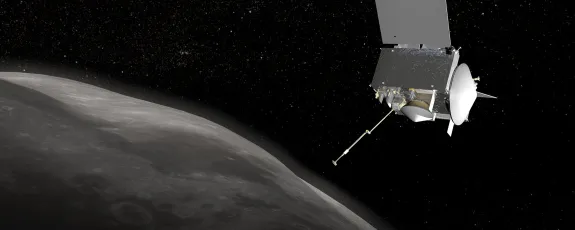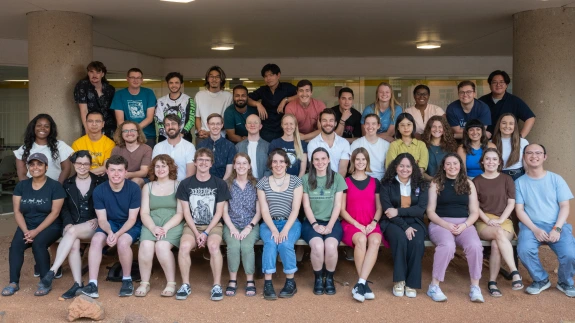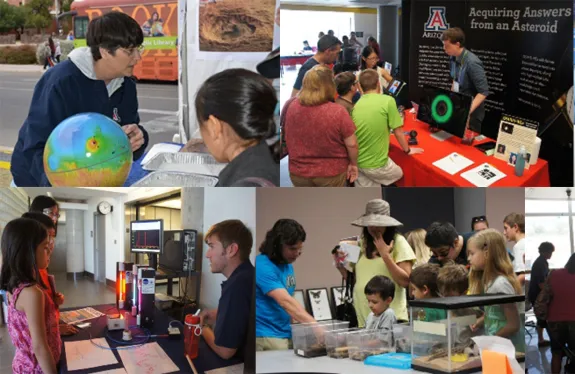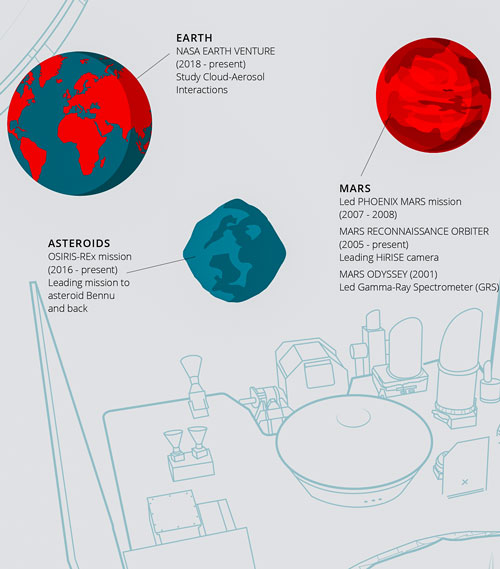LPL at a Glance

Research
We have been at the forefront of space exploration from the beginning and our reputation for excellence in space science research continues to shine.
- LPL was founded by Gerard P. Kuiper with the purpose of exploring the solar system. Faculty have served as either principal or co-investigators on many spacecraft instruments and missions, beginning with the Ranger missions to the Moon in the 1960s.
- LPL successfully led and managed surface operations for the PHOENIX Mars mission, becoming the first university organization to manage a mission to Mars.
- LPL faculty continue their work with spacecraft mission projects, including participation in Parker Solar Probe, Juno (Jupiter), MRO (Mars), MAVEN, LRO, and Mars Odyssey.
- The OSIRIS-REx sample return mission to the near-Earth asteroid Bennu returned the largest carbon-rich asteroid sample ever delivered to Earth.
- LPL is home to OSIRIS-APEX, on its way to study the near-Earth asteroid Apophis, an object expected to have a close encounter with Earth in 2029.
- The High Resolution Imaging Science Experiment (HiRISE), obtaining the highest-resolution images of the Martian surface ever taken from orbit, is headquartered at LPL.
- Research at LPL spans a broad cross-section of planetary science research, including planetary interiors, surfaces, and atmospheres; orbital dynamics; small bodies; extrasolar planets; the Sun and heliosphere; interstellar space; origin and evolution of life; magnetospheres; and more.
- In the June 2025 ranking by U.S. News & World Report (list of best global universities for space science), the University of Arizona, led by research and publications from LPL and Steward Observatory, was ranked No. 4 globally and No. 2 among public universities in space science research, based on our strong research reputation and publication frequency.
- For the 6th straight year, the FY24 NSF Higher Education Research and Development survey ranks the University of Arizona, led by projects in LPL and Steward Observatory, #1 among all universities in space science research and development expenditures.
- LPL is a foundational partner in the Arizona Space Institute, a driving force in advancing the University of Arizona's role as the world's leading university for space science, human and robotic exploration, astrobiology/exoplanets research, space situational awareness research, and planetary defense.
We operate state-of-the art laboratories and telescopes
LPL hosts the Kuiper-Arizona Laboratory for Astromaterials Analysis, which provides instrumentation that combines 2D- and 3D-analysis of composition and structure from cm to atomic length scales.
LPL’s SPACEWATCH® was the first program to discover an asteroid using electronic detection, and LPL’s Catalina Sky Survey (CSS) has discovered most of the near-Earth asteroids found since 2005; combined, they have discovered approximately half of the known near-Earth asteroids.

Academics
We train new generations of space scientists
The Department of Planetary Sciences was established in 1973, thirteen years after the founding of LPL. Our alumni are active in a variety of disciplines and professions around the world.
Our students excel at independent research
Graduate students at LPL have been exceedingly successful in winning competitive national fellowships awarded for original research proposals.
UA LPL facilities support student academics
Our students work with planetary missions and instruments led and designed at LPL, such as the HiRISE camera, the OSIRIS-REx mission, and the Transmission Electron Microscope.
About

Public Education and Outreach
Public events
The faculty, staff, and students at LPL take every opportunity to share research and development with the community and to participate in community events whenever possible (evening lecture series, public talks, science fairs, hands-on science open-houses, etc.).
STEM Education and Support
LPL is home to the Arizona NASA Space Grant Consortium Program office, the Space Imagery Center, and the Teaching Teams Program.


